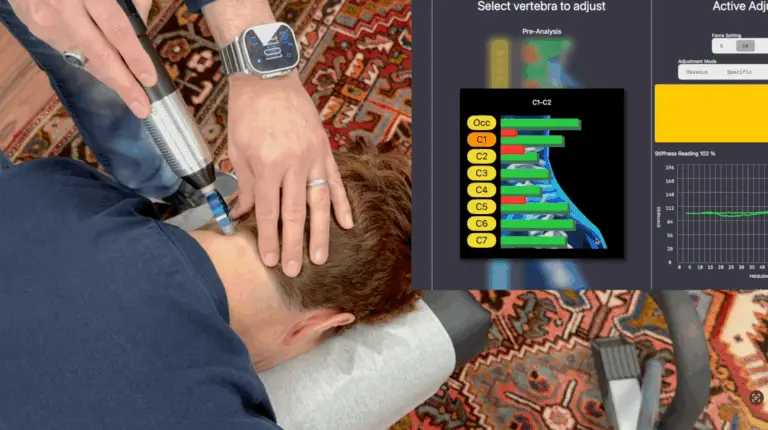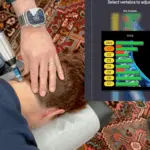Some professions are more physically demanding than others. When thinking of these careers, those in the medical field probably don’t make many lists. However, chiropractic adjustments require significant physical exertion, making it hard on the doctor’s body, especially over the course of a career. Chiropractors who depend on and frequently utilize manual adjusting techniques are all too familiar with the wear and tear it can cause.
For chiropractors seeking to stay healthy, extend their careers, and maximize their ability to help their patients, visualized instrument adjusting is a simple yet profound way to accomplish all of the above (and then some).
The Physical Challenges of a Chiropractic Career
Chiropractors face numerous physical challenges throughout their careers, and while some are trying on their own, the true concern is the accumulation of these physical demands over months, years, and even decades. For example, chiropractors spend a significant amount of time on their feet as they work with patients. A few hours may not seem like much, but when considered in the context of work weeks accumulating over years, the impact on a doctor’s body can be substantial.
In addition to prolonged standing, chiropractors lift heavy weight and exert considerable energy and force when adjusting patients’ musculoskeletal systems. When it comes to manual adjusting, the doctor’s body is the tool. Over time, this exertion can cause fatigue, injuries, and joint issues. In the end, helping patients overcome musculoskeletal problems can lead to a chiropractor developing their own. Often, the cumulative physical stress will cut a chiropractic career short, limiting a doctor’s ability to help patients, grow their practice, and provide for their future.
How Instrument Adjusting Prolongs Chiropractic Careers
Reducing the daily stress placed on your body as a chiropractor may not seem like much in the moment, but as time passes, the difference it makes can be life-changing. While there are a handful of methods that can be used to make minor improvements, none are as powerful and immediate as investing in instrument adjusting and integrating it into your practice.
By using Multiple Impulse Therapy (MIT) delivered by chiropractic tools, you can accurately provide precise force easily. This benefits both you and the patient, as the ability to customize the level of force exerted on a pinpoint area reduces any discomfort a patient might experience and removes the onus from your body. With visualization software, you can even provide the patient with a visual of their spine and the effectiveness of the treatment they are receiving in real time. Together, visualized-instrument adjusting makes sessions just as effective as manual adjusting in far less time. It also eliminates the need to use your body as a tool. Over time, it will greatly benefit your practice, your patients, and your career.
Extend Your Chiropractic Career with PulStar
The advantages of implementing instrument adjusting into your repertoire as a doctor of chiropractic are immense. Equally as important as taking the steps to prolong your career is choosing the right instrument adjusting system to help you along the way. With several options on the market, this can be a challenging task.
When it comes to features, innovation, ease of use, and bang for your buck, no visualized instrument adjusting system compares to the PulStar. As the originator of computerized instrument adjusting, the PulStar system is cutting-edge and always leading the charge in innovation. It is also a comprehensive product suite, giving you everything you and your practice need to thrive from day one.
For more information about PulStar and how it can help revolutionize and extend your chiropractic career, feel free to contact us. Our team is knowledgeable, friendly, and ready to answer any questions you may have.











